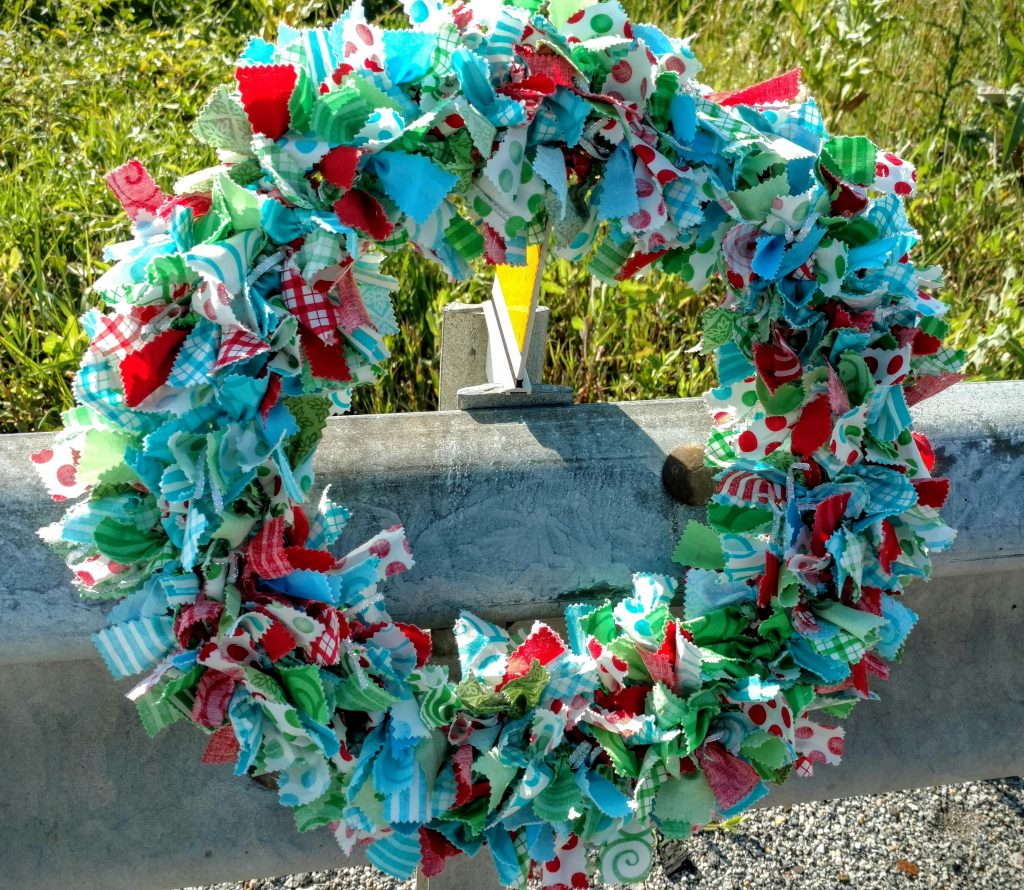Notice the landscape lines in between the trunks. See how they hit the trunks, follow the trunk for a small distance, and come back out again?
This is what I mean by 'blending'. It creates unified quilting between all parts instead of a bunch of separately quilted areas. It also makes the background quilting stay in the background, as the lines in the picture below appear to go behind the tree.
The drawn example below is what not to do. It creates a quilted area that doesn't relate to the other piecing - it just bounces back and forth. The background doesn't flow from one area to the next.
The correct way to quilt around pieced shapes is to have the quilting bump into the object, then stitch following the seam line, then resume quilting in the background. Yes, that means stitch-in-the-ditch.
The quilting moves to the element, stitches along side it, then moves away from the pieced element, ultimately creating a joining of all the elements.
Here's a closeup around one of the snowballs.
The outline stitching around it blends in with the background stitching.
This concept applies to any background fill, not just the lines I've shown you. All it takes is a bit of planning, and the willingness to stitch-in-the-ditch. But the results are worth it!
Happy Quilting!





















